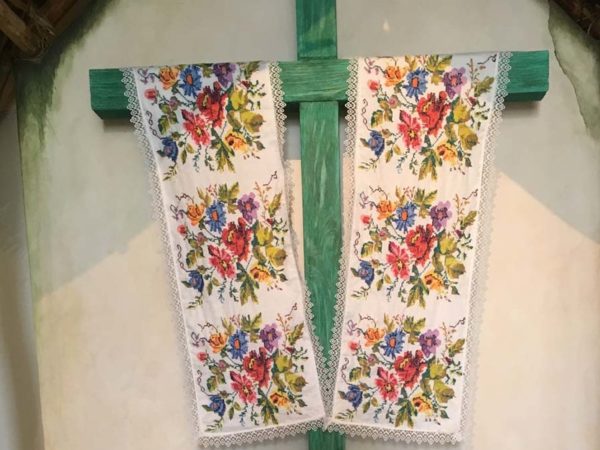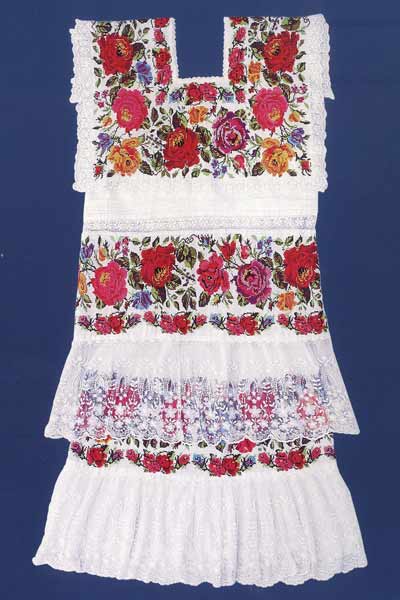Have you ever explored Mérida’s Centro or Paseo de Montejo and stumbled across some beautiful dress designs such as hipiles and ternos? This is the story behind the hipil and the terno, both Yucatecan traditional costumes created by their ancestors, the Maya.
Hipil or Huipil comes from the nahuátl “huipili”, and it is a type of blouse or dress typical of the indigenous people, it is usually hand embroidered with beautiful geometric and floral patterns. The hipil is now used by everyone, especially in Mérida as a casual dress.
It is woven on a loom known as “telar de cintura“, which is a machine created 1500 years before Christ, where no fabric piece is wasted, plus its fabric is made from natural biodegradable cotton or silk, making the whole process a sustainable cycle.

It must also be added that there are many types of hipiles, you can either get a short length one or a long one, as well as a square type figure or diamond-shaped, also called Quexquémitl, options are endless.
While the hipil is a casual type of dress, the Yucatecan Terno is mostly used during celebrations as a party dress. The terno is a three-piece dress that includes the hipil and two other separate garments.
Here are the parts of a terno, a Yucatecan special ceremony’s dress:
Júbon
It is the square figure located on the top of the dress, it goes over the shoulders and reaches below the chest, creating a square neckline that exposes the woman’s neck. This piece has two side gaps, that given the width of the garment, simulate short sleeves, leaving most of the arms uncovered. It also has a beautiful hand embroidery design.
Hipil
This piece is attached to the jubón and reaches to the knee. It is placed over the third piece of clothing, made of linen, silk or cotton. It is the longest item of the terno.

Fustán
Under the other two pieces of clothing we previously mentioned, you will find the Fustán, located at the bottom of the dress, being the last piece of the garment. Adjusted from the waist down, placed below the hipil, and all the way down to the ankles just above the feet, the Fustán creates the perfect combination with the Jubón, since it usually comes with a matching hand embroidered design.
Now that you know the hipil and terno’s history and designs, we encourage you to get one for yourself, tailor-made if possible, it is the perfect outfit, especially during the hot season, since they are very comfortable and fresh garments.1
TYT Newsroom



